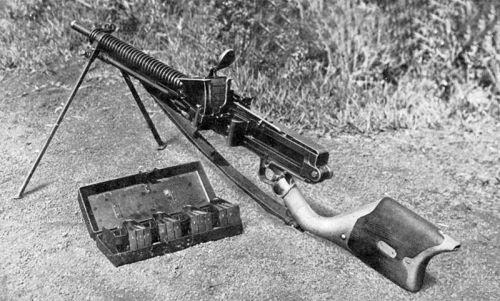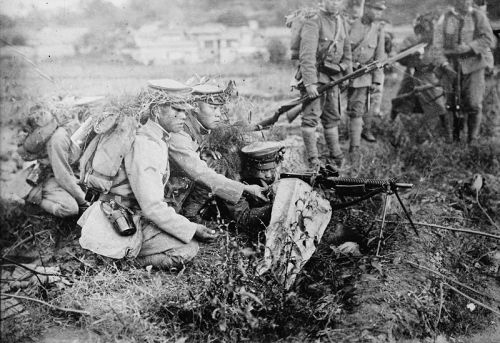The Japanese Type 11 Light Machine Gun,After observing European troops in World War I, the Japanese
The Japanese Type 11 Light Machine Gun,After observing European troops in World War I, the Japanese Army decided that it badly needed a light machine gun. Whereas a heavy machine gun is a large tripod mounted gun manned by a crew, a light machine gun is much smaller, being able to be transported and operated by a single infantrymen.In 1922 the Japanese gun designer Kijiro Nambu came out with the Type 11 light machine gun, called the “Type 11” because it was introduced on the 11th year of the reign of Emperor Taisho. The Type 11 was an air cooled machine gun that utilized a gas operated action which fired an open bolt. It came with a folding bipod for the user to fire while kneeling, sitting, or in the prone position.Perhaps the most unique design of the Type 11 was its ammunition feeding mechanism. The Type 11 did not use detachable magazines or ammunition belts like other machine guns, rather it used a top mounted hopper. To load the user simply inserted 5 round stripper clips horizontally into the hopper. The hopper could hold 6 of these clips for a total capacity of 30 rounds. (see pic below)This was a great advantage because the gun was chambered for the 6.5 Arisaka cartridge, the standard rifle round used by the Japanese infantryman. Because Japanese soldiers also carried their ammunition in 5 round stripper clips, a machine gunner could easily bum ammunition from his fellow soldiers.Unfortunately the hopper system was also the Type 11’s greatest design flaw. It was in 1931, when Japan invaded the Chinese province of Manchuria, that the Type 11 first saw real combat. There it was proven to be a terrible design. Dust, grit, and moisture often entered the gun through the hopper, causing malfunctions and jams. Furthermore, in order to feed reliably the ammunition had to be lubricated before feeding. As a result the hopper mechanism contained a brush and a small reservoir of oil to lubricated the ammunition as it was fed through the machine gun. This system became a magnet for dirt, further compromising its functionality. With all it’s flaws, the Japanese made only one design change, a switch from the 6.5 Arisaka cartridge to a new cartridge called the 6.5 Arisaka Genso, a less powerful round that improved reliability and reduced muzzle flash. Unfortunately because of the ammunition change, the Type 11 lost it’s greatest advantage, common caliber usage with the rifle toting infantry. In other words the Type 11 had lost everything good about its design, and became all suck.Despite its terrible performance and bad reputation among soldiers, the Type 11 continued to be produced and used during the Sino-Japanese War as well as World War II. In 1936 the Type 36 light machine gun was introduced, a new design that proved to be reliable and robust. This was then improved with the Type 39 light machine gun. With new and improved light machine guns, the Japanese ended production of the Type 11 in 1941. Despite the introduction of better weapons, the Type 11 was never phased out and continued to be used during World War II, as they needed every weapon that could be mustered to fight off the Allies. Between 1922 and 1941 around 29,000 Type 11’s were produced. -- source link
Tumblr Blog : peashooter85.tumblr.com
#guns#firearms#machine guns#wwii#japanese#history

